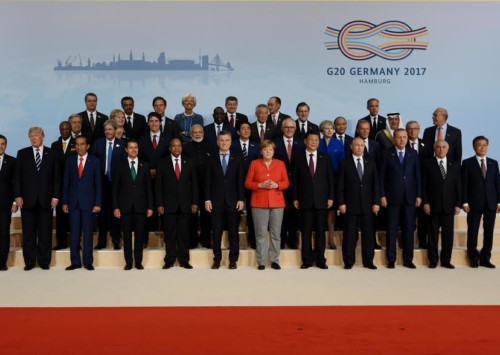China-India normalise relations
As China observes 70 years of communism, India is in its 72nd year as an independent nation. The journeys of the two nations could not have been more different.
The two largest nations in the world began their journeys almost at the same time and in pretty much the same shape. After a bloody civil war, coming on the back of the Second World War, had left China a bitterly divided and extremely poor nation with the social and political institutions in the ruins. Tens of millions of Chinese had been uprooted and displaced, not to speak of the countless dead. Across its southern borders, India had attained independence from the British colonial yoke barely two years earlier and was still reeling from the bloody partition and its after-effects, with millions of refugees who had fled from their homes in what had become East and West Pakistan, on both sides of the new border and India was still engaged in a low-intensity, undeclared war with Pakistan in Jammu & Kashmir.
The economies of the two nations were pretty much similar also. Mainly agriculture-driven, with practically no industrial base and exports and imports. Socially, too, China and India had the same profile. High infant mortality, low life expectancy, poor health and education infrastructure and almost a similar per capita GDP of USD 600 in 1950. The state of the two countries did not diverge dramatically till at least late 1970s.
Then came the first differentiating factor towards the end of 1970s when Deng Xiaoping unleashed a series of economic reforms, boosting not just manufacturing, but also letting in the private sector participation, often on the sly. By the end of his term as the President a decade later, China was firmly on the path to decades of economic boom, with the establishment of huge industrial clusters, notably in the southern provinces of Guangdong and Fujian.
India had more or less kept pace with China the early 1980s. But then the Chinese motor accelerated and now has left India years, if not decades, behind. Be it economic, social or strategic indicators, India and China are no longer comparable. For example, adult male life expectancy in India today stands at about 68 years, a point that China had surpassed nearly 30 years earlier.
Another area where China has left India way behind is in tackling pollution, notably air and water. A decade ago, Beijing was by far the most polluted metro in the world and the city had become infamous for its smog. Chinese rivers were turning poisonous due to the uncontrolled flow of industrial and farming effluents. Now, the air in Beijing is relatively cleaner and it is Indian capital, New Delhi, that has taken the dubious distinction of being the most polluted capital in the world. In fact, 11 of the 15 most polluted cities in the world are in India and its water resources are facing the same set of challenges that China had faced and has managed to overcome, at least to a certain extent.
Economically, too, the Chinese panda has left the Indian elephant miles behind. Today, the Chinese economy is five times as big as India and the per capita income is six times. Strategically, too, China has emerged as the most powerful nation, not just in Asia, but indeed the sole country posing or capable of posing a challenge to the United States.
In terms of international relations and diplomacy, too, China has made huge strides from 1950 when India already had established a wide network of close relationships with many countries and was at the helm of the Non Aligned Movement. Today, using its raw financial muscle and investment capacity, China has made deep inroads as a partner practically all over the world and the Belt & Road Initiative of the current President Xi Jinping is meant to strengthen Chinese influence even further.
The gap between the two nations is perhaps the starkest in their positioning or readiness for the future. Intensive investments in high technology and research has seen the emergence of numerous tech giants – Alibaba, Baidu, Tencent, the list is endless – which are gearing up to counter the Silicon valley and in some areas have been honourable competitors. China is also well placed in key technology areas like autonomous cars, electric vehicles and artificial intelligence.
Here, sadly, even though India has a robust information technology industry and a globally recognised prowess, the country has been unable to create one technology company that could be counted amongst the top 10 or top 20. Instead, India’s market in technologies for tomorrow is being rapidly gobbled up by the Silicon valley and Chinese giants in equal parts. Thus, there is no Indian Amazon or Alibaba, instead both are in a race to capture the Indian e-commerce market. Tencent’s social media firm TikTok and telecom hardware maker Xiaomi are now household names as much in India as they are in their home country.
The reasons for divergent journeys of China and India could be many. Not least because of the chaotic democracy that India has been since 1947. Another significant and perhaps more telling difference has been in the leaderships that the two nations have had. The Chinese leaders, while of course, securing their own place and power, have had a long-term vision about how they would like to take the country ahead. In India, however, almost all leaders have had their eyes blinkered by the next election, however, insignificant it may have been. Most leaders have spent their time in power just amassing power rather than harnessing it to help the country develop. One can only hope that India would soon have leaders who would place the country’s interest before their own!













